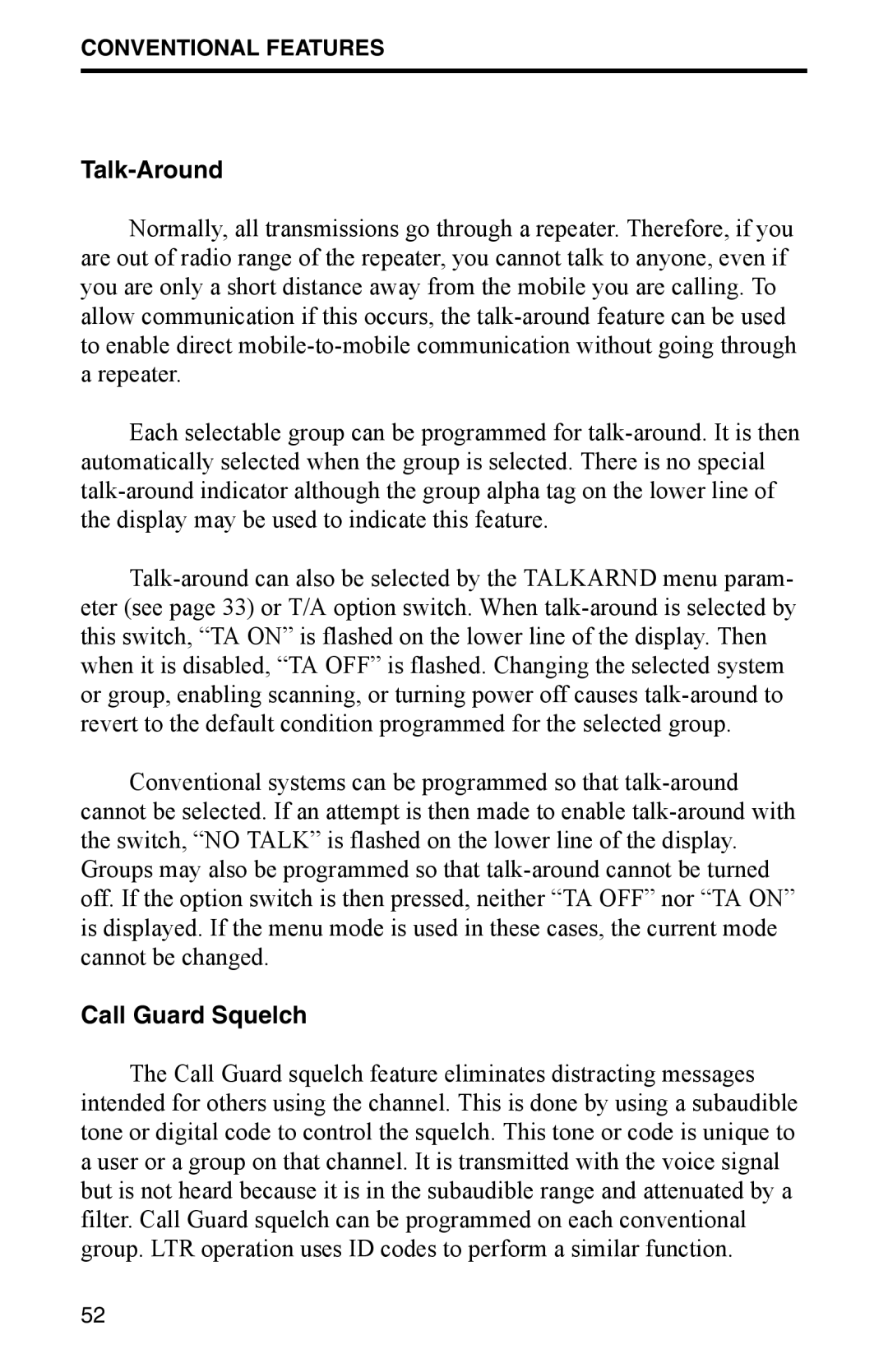
CONVENTIONAL FEATURES
Talk-Around
Normally, all transmissions go through a repeater. Therefore, if you are out of radio range of the repeater, you cannot talk to anyone, even if you are only a short distance away from the mobile you are calling. To allow communication if this occurs, the talk-around feature can be used to enable direct mobile-to-mobile communication without going through a repeater.
Each selectable group can be programmed for talk-around. It is then automatically selected when the group is selected. There is no special talk-around indicator although the group alpha tag on the lower line of the display may be used to indicate this feature.
Talk-around can also be selected by the TALKARND menu param- eter (see page 33) or T/A option switch. When talk-around is selected by this switch, “TA ON” is flashed on the lower line of the display. Then when it is disabled, “TA OFF” is flashed. Changing the selected system or group, enabling scanning, or turning power off causes talk-around to revert to the default condition programmed for the selected group.
Conventional systems can be programmed so that talk-around cannot be selected. If an attempt is then made to enable talk-around with the switch, “NO TALK” is flashed on the lower line of the display. Groups may also be programmed so that talk-around cannot be turned off. If the option switch is then pressed, neither “TA OFF” nor “TA ON” is displayed. If the menu mode is used in these cases, the current mode cannot be changed.
Call Guard Squelch
The Call Guard squelch feature eliminates distracting messages intended for others using the channel. This is done by using a subaudible tone or digital code to control the squelch. This tone or code is unique to a user or a group on that channel. It is transmitted with the voice signal but is not heard because it is in the subaudible range and attenuated by a filter. Call Guard squelch can be programmed on each conventional group. LTR operation uses ID codes to perform a similar function.
